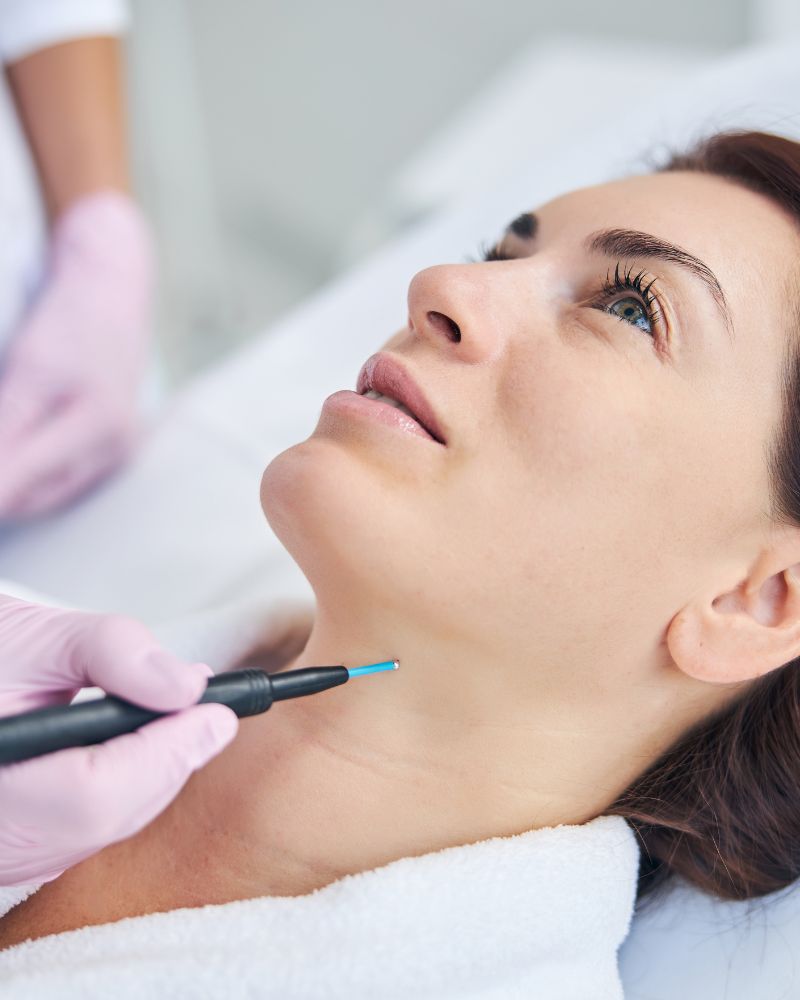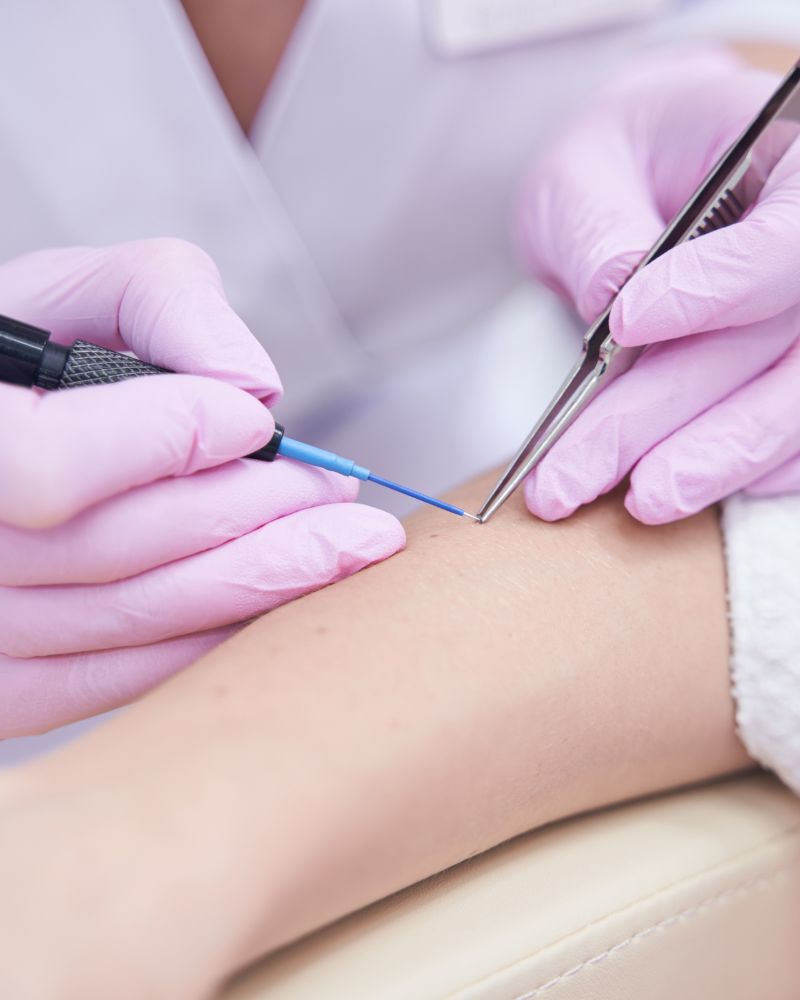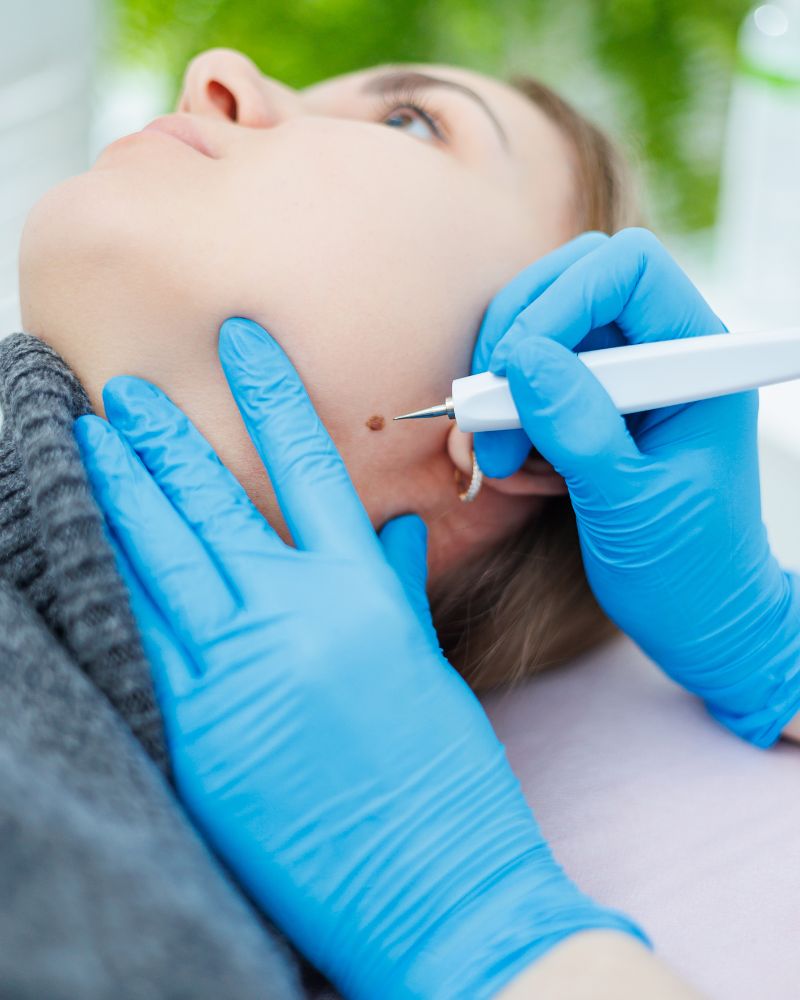Using Precise Electrocautery
Milia Removal Calgary
Get safe, professional treatment to remove milia and unwanted skin lesions.
What Are Milia?
Milia are small, white or yellowish bumps that typically appear on the face—especially around the eyes, nose, and cheeks.
They form just under the skin and look a bit like tiny whiteheads, but unlike acne, they’re not caused by clogged pores from oil or bacteria.
What Causes Milia?
Milia occur when keratin, a protein found in the outer layer of the skin, becomes trapped beneath the surface. Instead of shedding naturally, the skin forms a tiny cyst. They’re quite common and can be caused by:
-
Skin damage (like burns, blistering, or sun damage)
-
Heavy or pore-clogging skincare products
-
Skin resurfacing treatments (like laser or dermabrasion)
-
Long-term use of steroid creams
-
Natural aging and slower skin turnover
How to remove milia?
Electrocautery Milia Treatment, also known as thermal cautery, is a simple procedure that utilizes heat generated by an electric current for milia removal and to remove unwanted skin lesions such as sebaceous hyperplasia (clogged oil glands) and moles.
This minimally invasive technique offers several benefits over traditional surgical methods, including precision, minimal scarring, and shorter recovery times.


What are the Benefits of Electrocautery?
Precision: Electrocautery allows for precise targeting of the lesion, ensuring that only the affected tissue is removed while minimizing damage to surrounding skin.
Minimal Scarring: Unlike traditional surgical techniques that may leave noticeable scars, electrocautery typically results in minimal scarring due to its precise and controlled nature.
Quick Procedure: Electrocautery procedures are often quick and can usually be performed in an outpatient setting, minimizing inconvenience for patients.
Effective Results: Electrocautery effectively removes various types of skin lesions, including milia, sebaceous hyperplasia, and moles, providing patients with smoother, clearer skin.
Low Risk of Complications: When performed by a trained healthcare professional, electrocautery carries a low risk of complications such as infection or excessive bleeding.
What types of skin lesions can this treatment be used for?
Milia Removal: Milia are small, white bumps that commonly appear on the face. They are caused by trapped keratin beneath the surface of the skin. Electrocautery can be used to safely and effectively remove milia by applying heat to the affected area, causing the trapped keratin to break down and the bump to disappear.
Sebaceous Hyperplasia Treatment: Sebaceous hyperplasia is a common benign condition characterized by enlarged oil glands on the face, resulting in small, yellowish bumps. Electrocautery can target and destroy these enlarged glands, reducing the appearance of the bumps and improving the overall texture of the skin.
Mole Removal: Moles, or nevi, are clusters of pigmented cells that can appear anywhere on the body. While most moles are harmless, some may be cosmetically undesirable or pose a risk of skin cancer. Electrocautery can be used to remove unwanted moles by carefully burning away the pigmented cells, leaving behind smoother skin.

Gallery



How to Care for Your Skin After Milia Removal (Electrocautery Treatment)
Proper aftercare is essential to promote healing, prevent infection, and optimize your results. Follow these instructions carefully to ensure a smooth recovery:
Keep the Area Clean and Dry:
Clean the area around the treated lesion(s) gently with mild soap and water twice daily. Pat dry with a clean, soft towel.
Avoid soaking the treated area in water, such as baths, swimming pools, or hot tubs, for at least 48 hours post-treatment.
Apply an Antibacterial cream if necessary:
Use a clean cotton swab or sterile gauze to apply the ointment, ensuring that your hands are clean to avoid introducing bacteria to the area.
Protect the Area:
Avoid wearing tight clothing or accessories that may rub against the treated area and irritate the skin.
Avoid Picking or Scratching:
Picking at the scab can increase the risk of infection and lead to scarring or delayed healing.
Monitor for Signs of Infection:
If you notice any signs of infection or have concerns about your healing progress, contact your healthcare provider promptly.
Be Patient and Gentle:
Allow your body time to heal naturally. It’s normal for the treated area to be slightly red, swollen, or tender for a few days to weeks.
Avoid strenuous activities or anything that may cause excessive sweating or friction on the treated area during the initial healing phase.
Follow Additional Instructions Provided by Your Healthcare Provider:
Your medical aesthetician will provide specific instructions tailored to your individual needs and the type of skin lesion(s) treated. Follow these instructions closely for the best outcome.
Remember that everyone’s healing process may vary, so be patient and gentle with yourself during this time. Average healing time is 1-3 weeks, depending on the type and size of lesion treated.
If you have any questions or concerns about your aftercare, don’t hesitate to reach out for guidance and support!
